This article describes the seven highlights of Kotor, a World Heritage site in Montenegro.
About Montenegro & Kotor
Montenegro
Montenegro is an Eastern European country with a population of approximately 620,000 and the capital is Podgorica.
Formerly a member of Yugoslavia as a socialist republic, the country gained independence in 2006 as the Republic of Montenegro.
In 2007, a new constitution was enacted and the country name was changed to Montenegro.
Montenegro covers an area of approximately 1.38 million km2, which is about the same size as Connecticut. Its southwestern side faces the Adriatic Sea, and it borders Croatia on the western sea coast. It borders Bosnia and Herzegovina to the northwest, Kosovo to the east, and Albania to the southeast.
The official language is Montenegrin, and the main religion is Christianity (Serbian Orthodox).
The currency is the Euro.
Kotor
Kotor is a triangular city located at the far end of the Gulf of Kotor, which extends from the Adriatic Sea.
The coast of Kotor is a good natural harbor with almost no waves, and the city is surrounded by cliffs and mountains, which led to its development as a fortified city in the Middle Ages.
Many of the buildings and walls built during the four centuries of Venetian rule remain beautifully preserved, and in 1979 the city was registered as a World Heritage Site as the “Natural and Cultural Historical Area of Kotor.
It is a little like Dubrovnik in Croatia, but the city is compact and easy to walk around. There were not so many tourists, so it is recommended for those who do not like crowds and want to enjoy quiet and calm sightseeing.
The illuminated walls of Kotor. Possible to see that the city is well protected by the walls.

Best 7 places to visit in Kotor!
Here are seven of the best places to visit in Kotor.
Fortifications of Kotor (top of Kotor Mountain)
If you are physically fit, we recommend that you first climb to the fortress on the summit behind Kotor. From the top of the mountain, you can see the beautiful city of Kotor and the tranquil Bay of Kotor.
Entrance
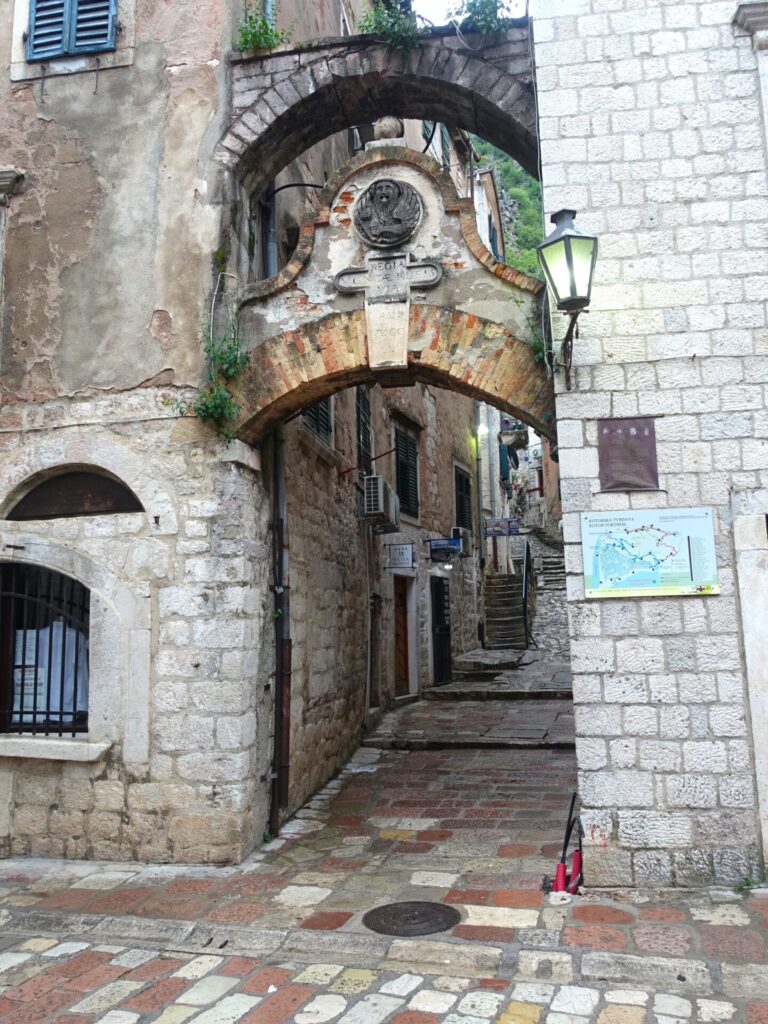
The entrance is a gate, and following the path leads to the fortress.
Walkway
This is the trail (mountain path) on the way up. The higher you go, the narrower and rougher the pavement becomes, so please watch your step when climbing.
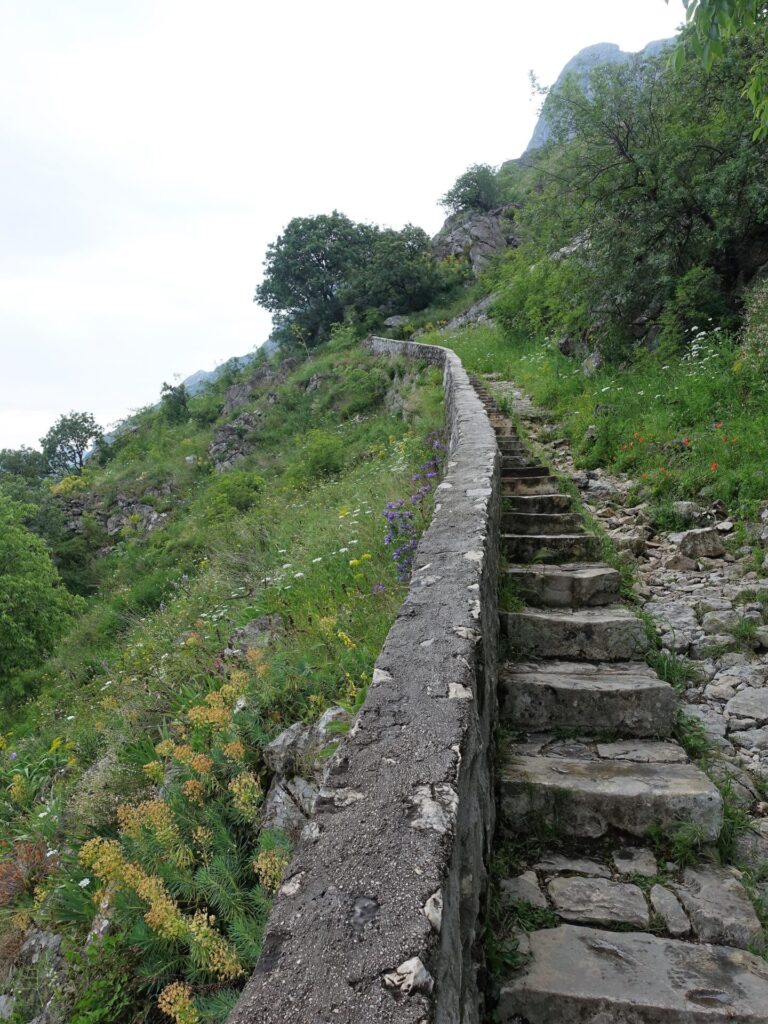
Church of Our Lady of Remedy
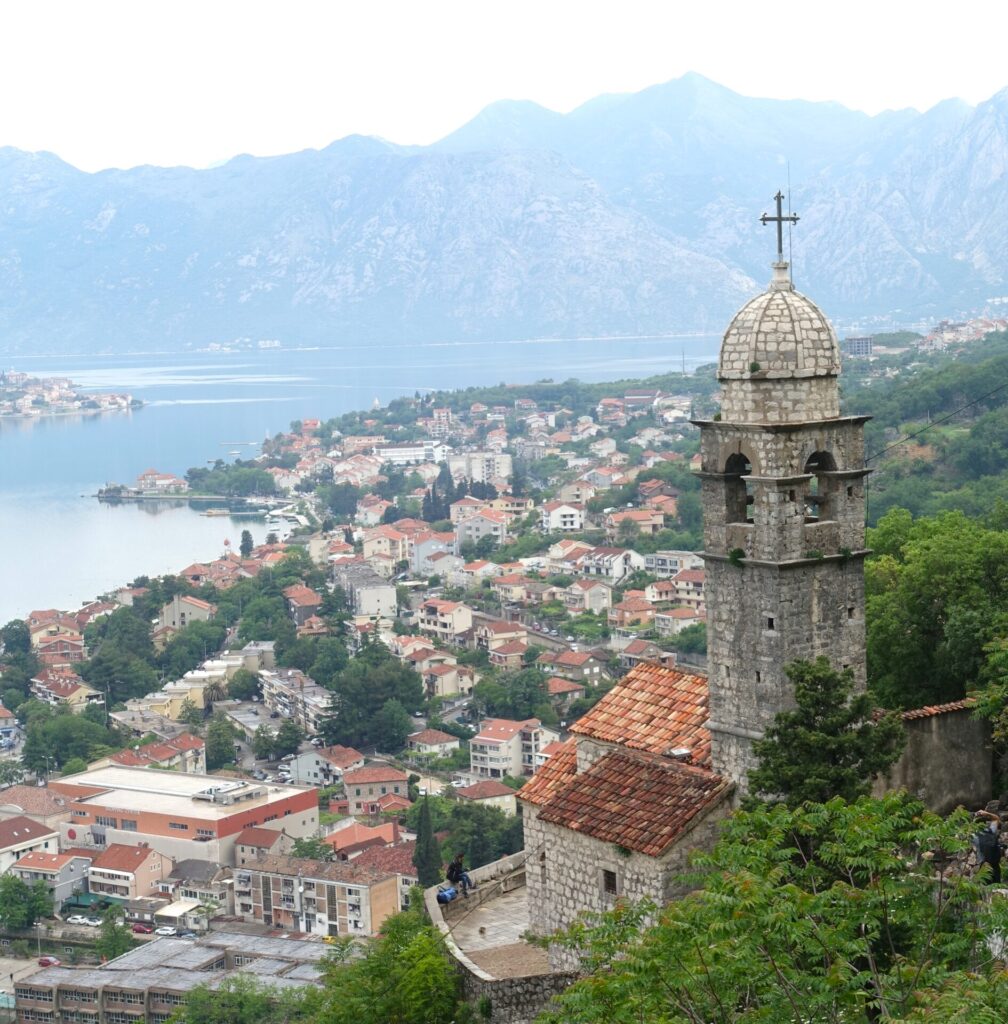
The church on the way to the fortress is Church of Our Lady of Remedy. When you reach this area, you can see Kotor Bay clearly.
St. Ivan Fortress
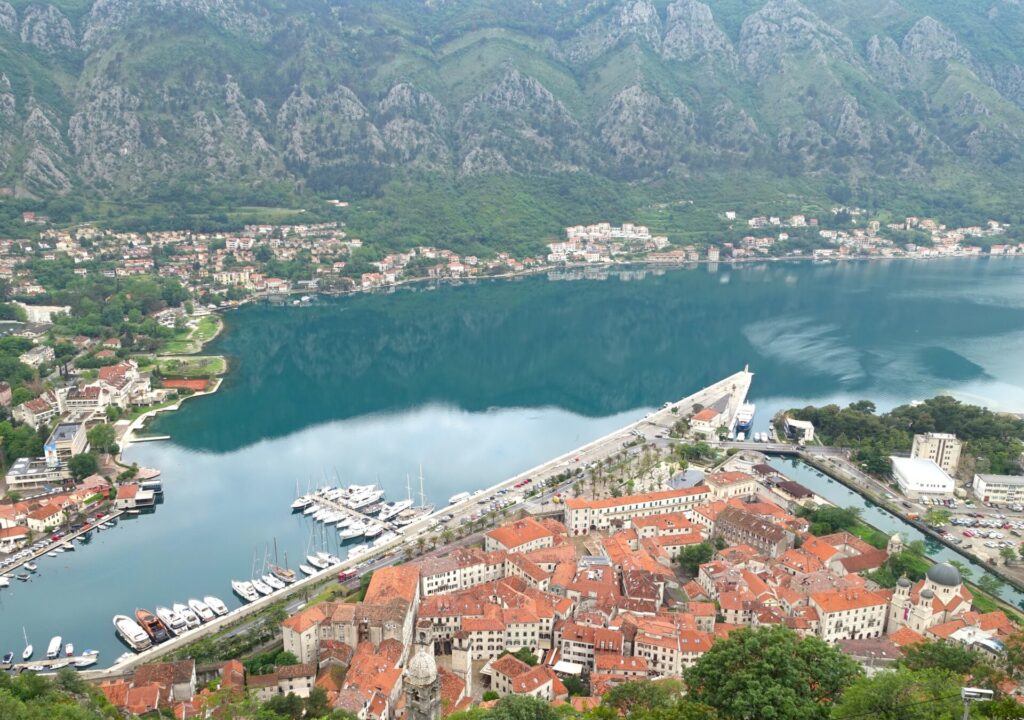
At the top of the mountain is St. Ivan’s Fortress, from whose walls you can see the beautiful city of Kotor and the tranquil Bay of Kotor.
It is a hard climb to get here, but it is worth the effort.
The Cathedral of Saint Tryphon
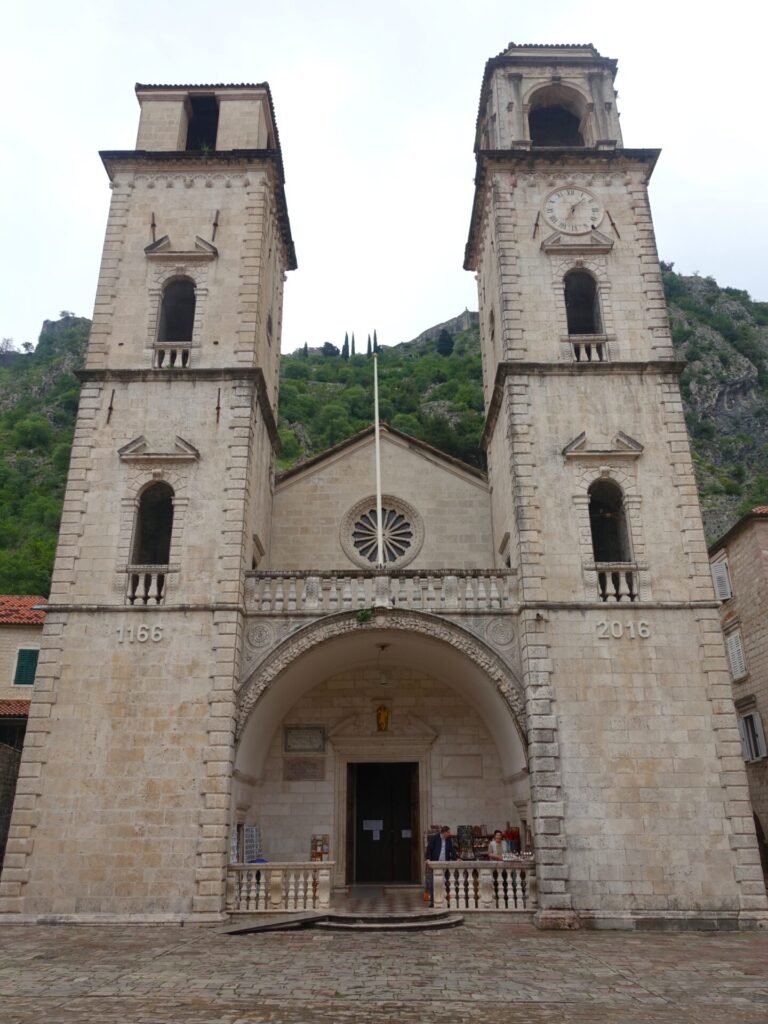
The Cathedral of Saint Tryphon is a Romanesque Catholic cathedral built in 1166.
Church of St. Luke
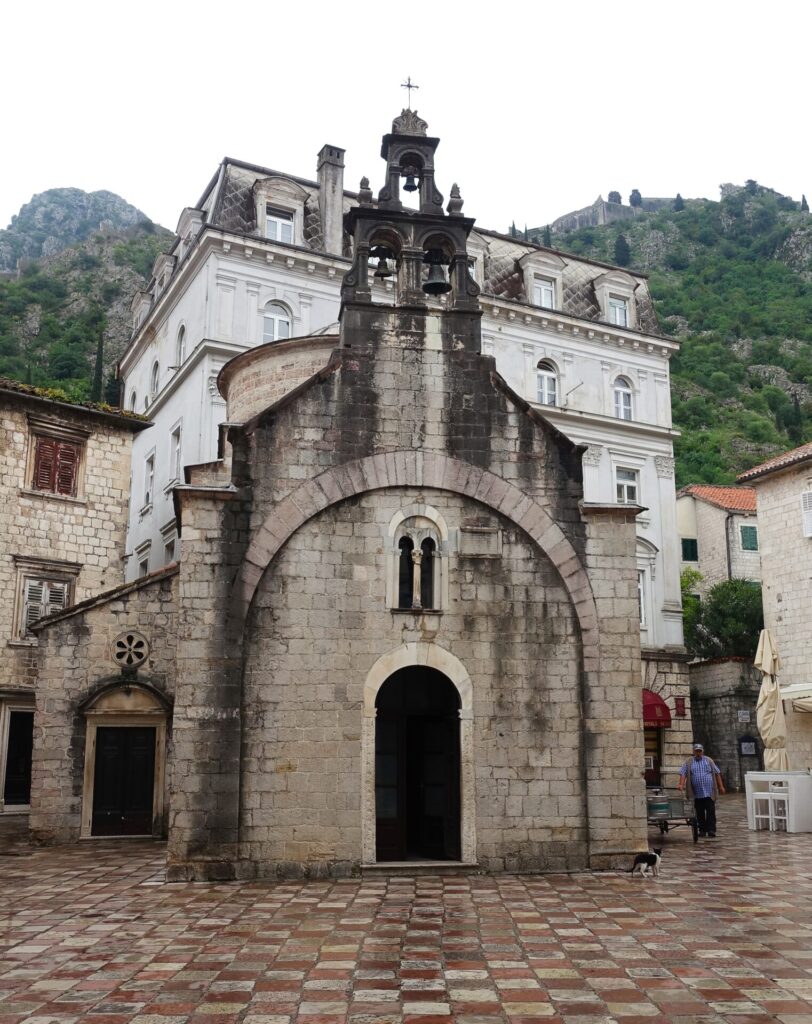
Church of St. Luke is a Romanesque Serbian Orthodox church built in 1199.
Church of St. Nicholas

Church of St. Nicholas is a Serbian Orthodox church completed in 1909.
It was built on the site of a monastery that was destroyed by fire.
The cross with three horizontal bars above the bell tower is an “eight-pointed cross” and is commonly seen in Orthodox churches.
The vertical and central horizontal bars mean “crucifixion cross,” with the upper horizontal bar representing Christ’s guilt tag and the lower bar representing the footstool.
Sea Gate (West gate)
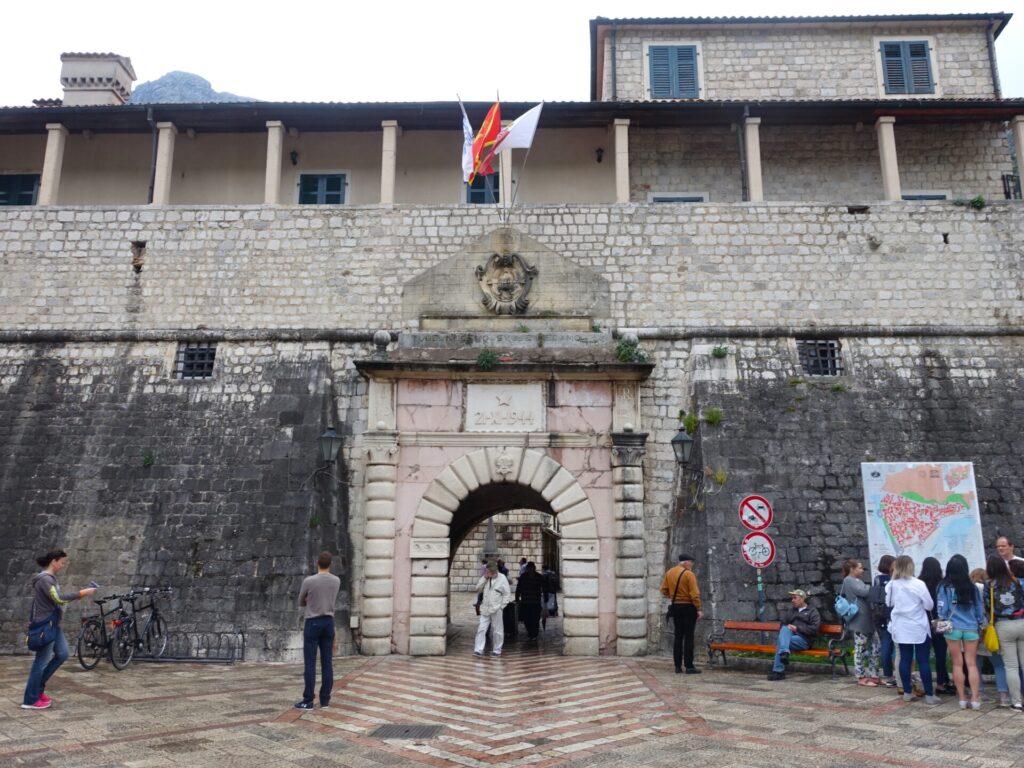
The Sea Gate was built in 1555 and is located on the west side of Kotor.
It is the main entrance to Kotor and is the largest Renaissance-style gate within the walls of Kotor. (It is the largest Renaissance-style gate within the Kotor walls.)
The entrance to Kotor is well protected and it seems difficult to attack.
Clock Tower of Kotor in Trg od Oružja
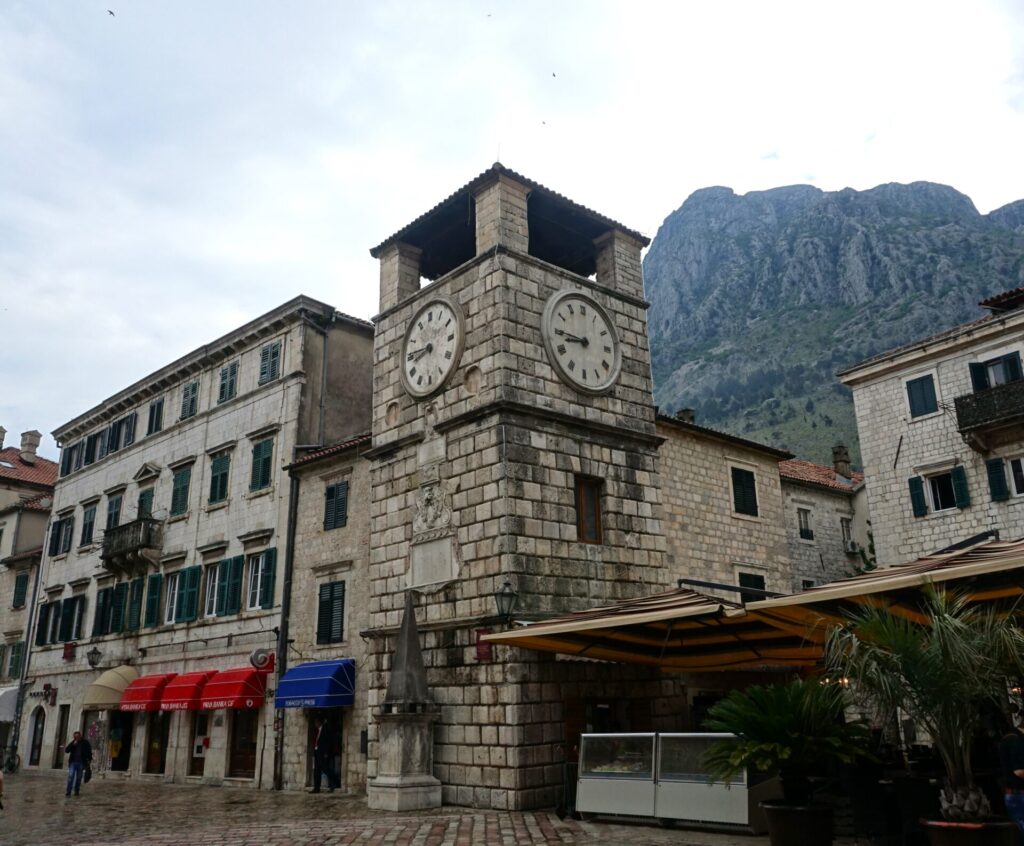
Trg od Oružja is the largest square in Kotor, located just inside the Sea Gate (West Gate).
The square is dominated by a Baroque clock tower built in the 17th century.
Strolling in the alley

In addition to the buildings introduced so far, there are many medieval buildings that are photogenic even in ordinary alleys.
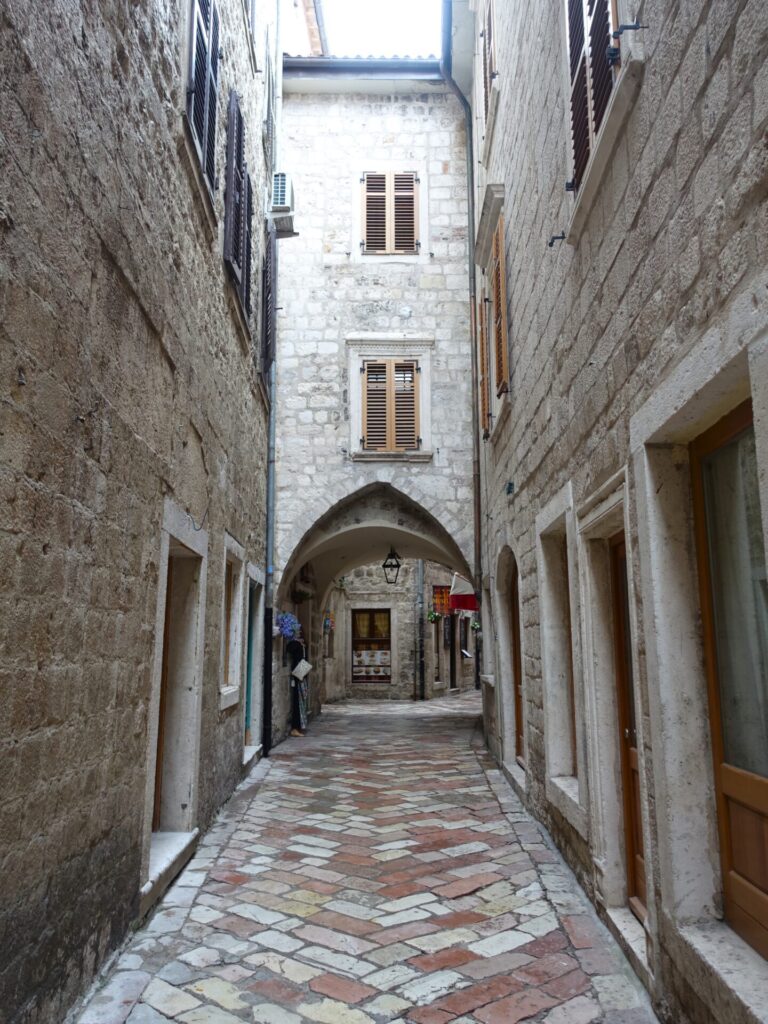
I felt like I was lost in a medieval world.
It was intricate and I felt like I was getting lost, but this was fun.

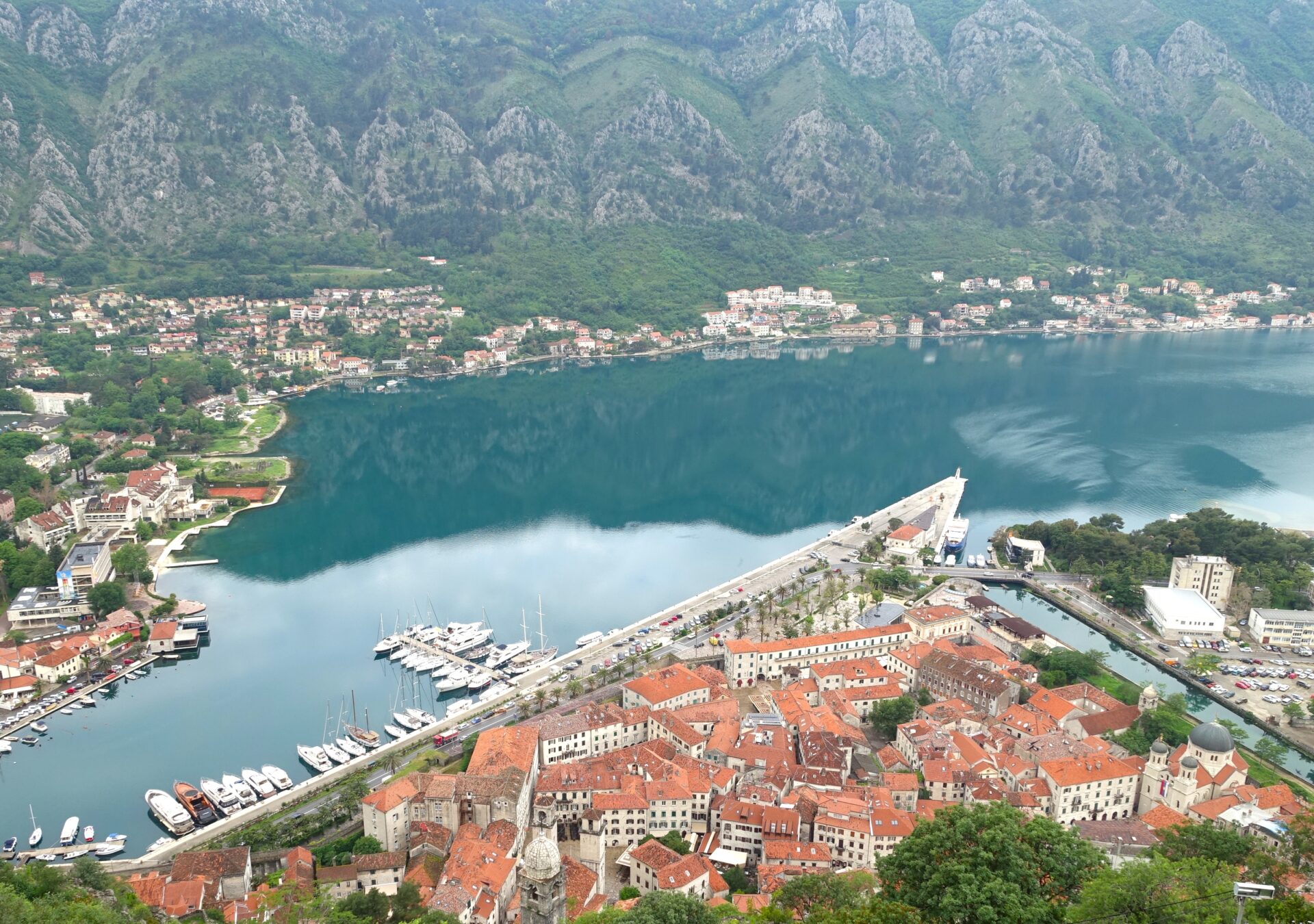
コメント